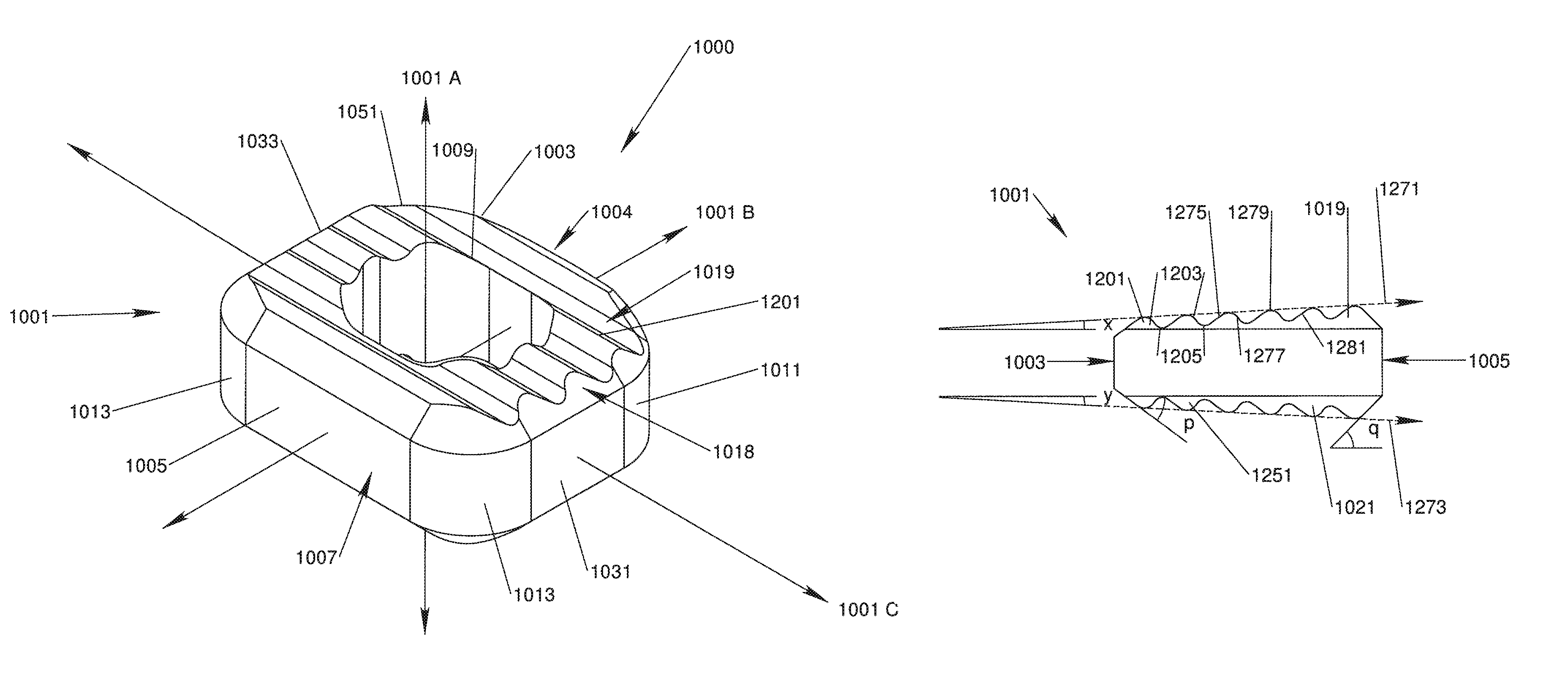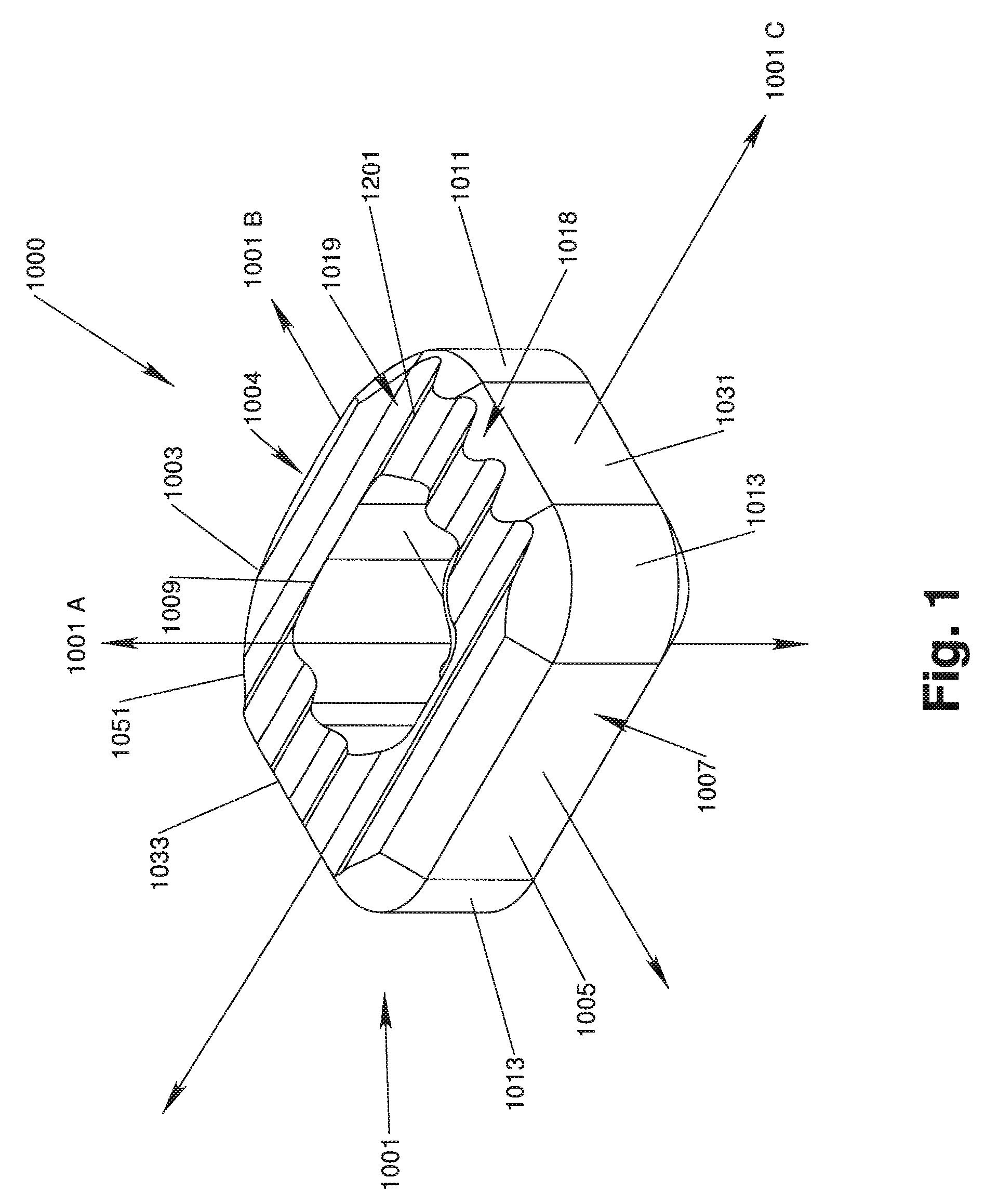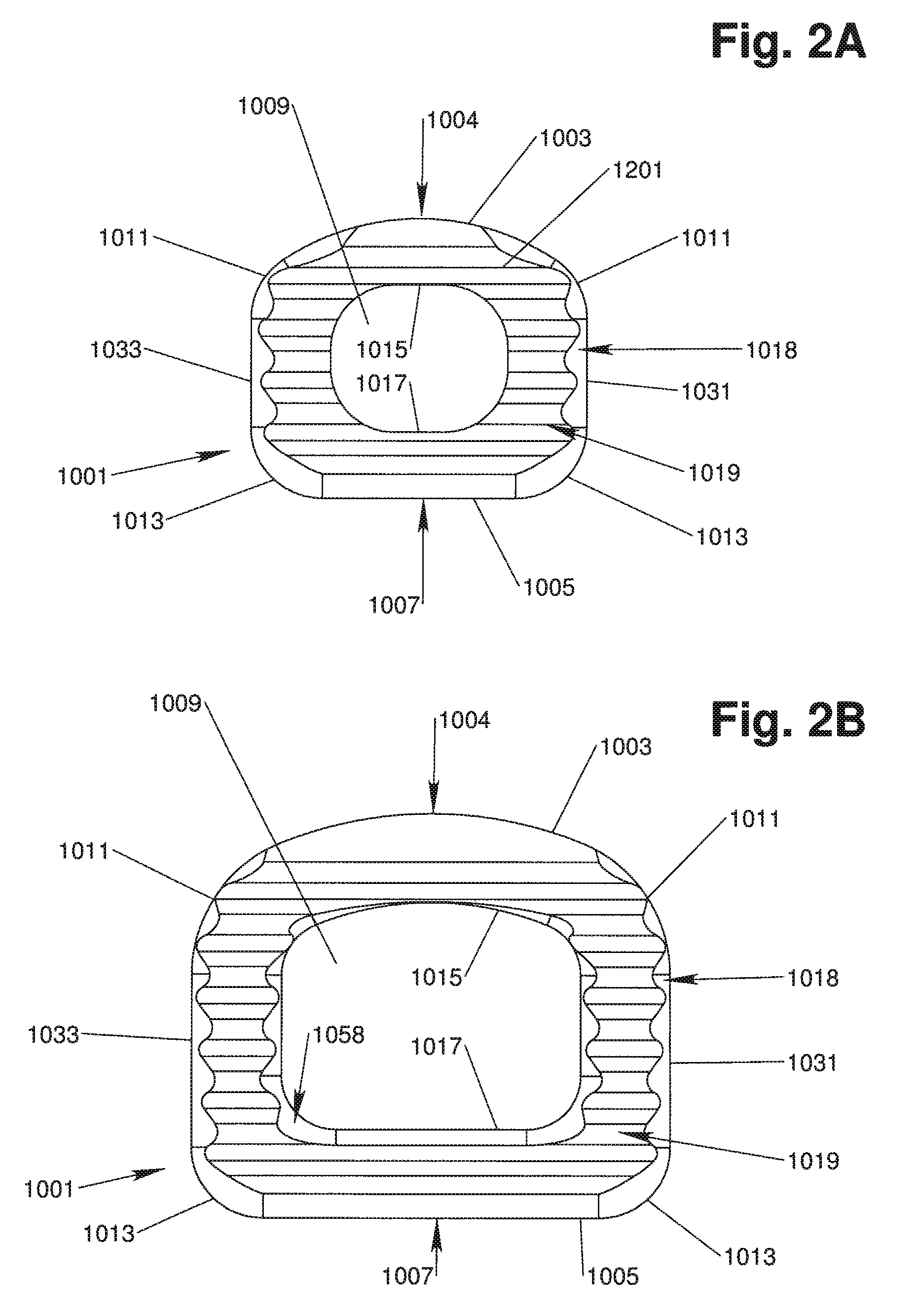Intervertebral implant devices for supporting vertebrae and devices and methods for insertion thereof
a technology of intervertebral implants and supporting vertebrae, which is applied in the direction of spinal implants, joint implants, prostheses, etc., can solve the problems of disc bulging or herniation, subsequent disc structural failure, back pain, etc., and achieves the optimization of device and material physical characteristics, less ductility, and minimize stress concentration in the implant body
- Summary
- Abstract
- Description
- Claims
- Application Information
AI Technical Summary
Benefits of technology
Problems solved by technology
Method used
Image
Examples
Embodiment Construction
[0039]With reference to FIGS. 1, 2A, 2B, 3, 4, 5A and 5B, in accordance with one aspect of the invention, an implant device 1000 has an implant body 1001 that is configured to be implanted in the intervertebral space between adjacent vertebrae. The implant body 1001 preferably has a generally rectangle-shaped, annular wall 1051 including an anterior wall portion 1005, a posterior wall portion 1003, and opposing side wall portions 1031, 1033. The annular wall 1051 defines upper and lower vertebral engaging surfaces 1019, 1021 and is disposed about a central void or throughbore 1009 extending therebetween, the throughbore 1009 being configured for accepting biologic materials, such as bone graft and / or bone void fillers therein.
[0040]A vertical axis 1001A of the implant body 1001 extends through the upper and lower vertebral engaging surfaces 1019, 1021, generally parallel to the throughbore 1009. An anterior-posterior axis 1001B of the implant body 1001 extends through the center of ...
PUM
| Property | Measurement | Unit |
|---|---|---|
| height | aaaaa | aaaaa |
| compressive strength | aaaaa | aaaaa |
| compressive strength | aaaaa | aaaaa |
Abstract
Description
Claims
Application Information
 Login to View More
Login to View More - R&D
- Intellectual Property
- Life Sciences
- Materials
- Tech Scout
- Unparalleled Data Quality
- Higher Quality Content
- 60% Fewer Hallucinations
Browse by: Latest US Patents, China's latest patents, Technical Efficacy Thesaurus, Application Domain, Technology Topic, Popular Technical Reports.
© 2025 PatSnap. All rights reserved.Legal|Privacy policy|Modern Slavery Act Transparency Statement|Sitemap|About US| Contact US: help@patsnap.com



